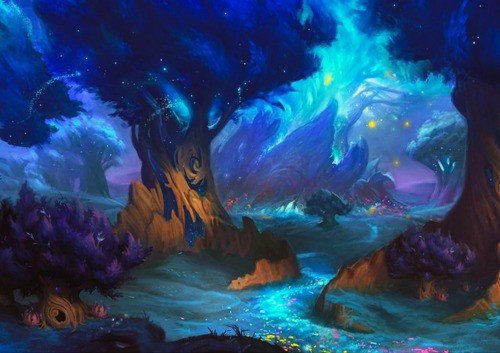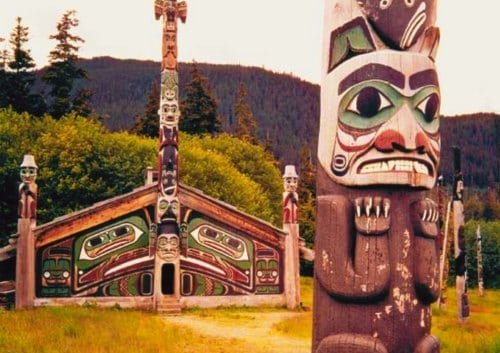In time, man learnt about the connection between the forces of nature, between the mountains and the rivers, between the sun and the trees, and so on. He then started believing in a spirit or a force, connecting all these forces with one another and finally, with himself.

There began animism, with the belief in the intricate connection between everything and the deities were assigned relational statuses. The distinction between the forces of creation and forces of destruction took a firm hold with animism. The norms and values of the communities were attached to the deities to enforce order in the society, to prevent people from questioning the values and to give them hope for survival.

People’s trust over the deities grew out of both fear and reverence. These religious systems are now known as polytheistic religions, with pantheons of Gods, each holding a force of nature and an emotion associated with them. The pantheons were led by a supreme deity who connected all the deities as a family and led them, along with the people.

Animism ran the show for the next few generations and man became more inquisitive; he wanted to understand the anima itself. The factor that could possibly connect everything around him intrigued men across all civilisations. Researches followed suit in, with each community unaware of the other’s progress. This process was not simultaneous across the civilisations but depended on their level of progress, in terms of economy, agriculture, mechanisation, metallurgy, trade and so on when compared with others.

Some communities that came until animism stagnated and gave rise to Totemism, a system which embodied the ideals of animism in forces of nature and linked them with individuals and groups of people. The others which moved on further wanted to learn about the mystic spirit. Here, the polytheistic religions were gradually trying to convert into monotheistic forms, but were seldom successful! The spirit connecting all the forces, the one the supreme deity represented, was thought to be the prime factor for the creation of all reality and the other deities.

At this point, people from various civilisations chose different paths to understand the spirit connecting all the natural forces. Some chose to debate with elders, philosophers and with men who excelled in arts and cultural studies. Some chose to look within the human mind and sat down to meditate. Some approached magic and created alchemy and sciences. Some encouraged individual thinkers who understood the laws of nature, and all of them individually came to a conclusion that the spirit was a conscious entity.

These thinkers understood individualism, the causality of thoughts and actions in the form of karma, the process of life, the sorrows attached with it and the means to end the sorrows by enforcing empathy and love. The thinkers with constant thought & analysis of life and through comparative studies of other civilisations’ progresses understood how the spirit worked in and around them.

The thinkers then discussed the nature of the conscious spirit. The discussions led to creationism; the ideology using which man created the concept of a supreme God, a singular entity responsible for all creation. The hitherto unanswerable questions, their answers and the paths to reach the entity to find those answers, were all attached to the God itself.

With developments in writing, language and scripts, the intellectual discussions were beginning to be codified as scriptures. Each major civilisation created a scripture of its own, emphasising the ideas of their own Gods. When contacts between the civilisations grew, the shared norms, values and ideas were either added to each other’s scriptures (to supplement them) or avoided to prevent create any instability in their own scriptures and cultures. These scriptures formed the basis for religions in the long run.

The oldest written scriptures were modified from time to time, to suit the needs of that present time, to maintain a harmonious society within these civilisations. The changes added were sometimes too intrusive into the personal lives of the people. What to eat, how to dress, what not to do, how to pray, when to pray and so on. The balance was struck between the political systems (monarchies) of the time and the people who maintained the religious scriptures, with each recognising the other to be the sole authority in their respective spheres of lives.

The common man was left with no choice but to accept the scriptures and their sayings to be true and lead his life! If anyone was brave enough to question the scriptures, (for reasons like mistreatment of a particular group of people based on their occupation or God’s failure of pity on a particular section of society, and the like) they were thrown away from the society and made outcasts.

Some outcasts attempted to find the God with their own knowledge and techniques. This resulted in new religions in the long run. Sometimes, they supplemented the original religions they followed, and sometimes they created an entire new religion of their own. The supplementary thoughts about God became sects in the original religions.
Some sects were over joyous about their unique understanding of God that they practised their worship with zeal and pride! These groups came to be known as cults.

-
Chapters 5, 6, & 7Product on sale₹299
-
Chapters 2, 3, & 4Product on sale₹199
-
Chapter 7. GodProduct on sale₹125
-
Chapter 6. EnergyProduct on sale₹120
-
Chapter 5. TimeProduct on sale₹90
-
Chapter 4. Chaos & OrderProduct on sale₹100
-
Chapter 3. Senses & ConsciousnessProduct on sale₹90
-
Chapter 2. The ‘Soul’ of SpiritualityProduct on sale₹90









